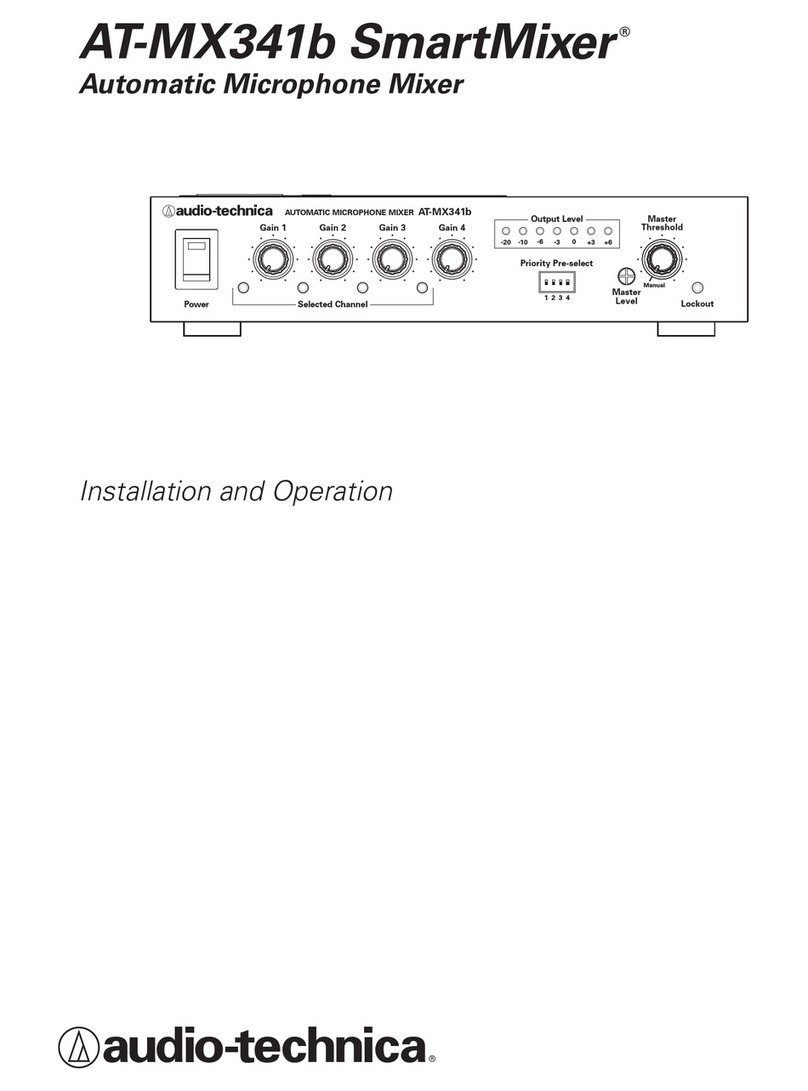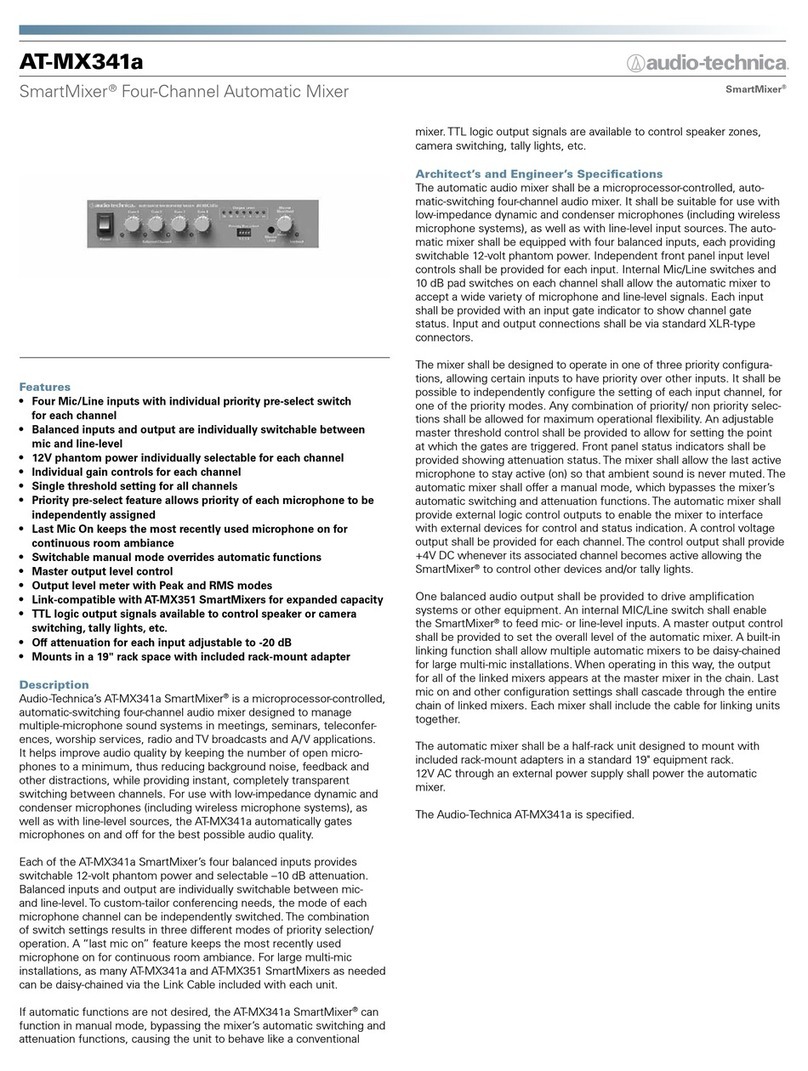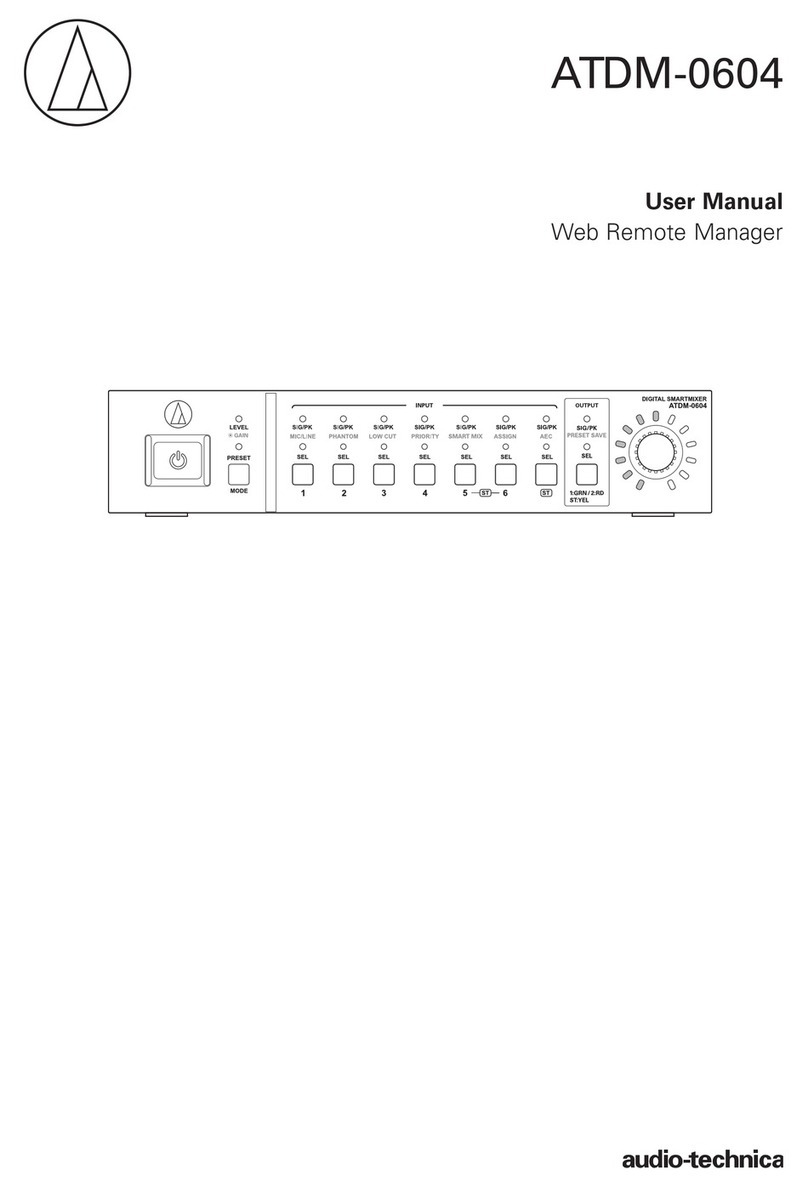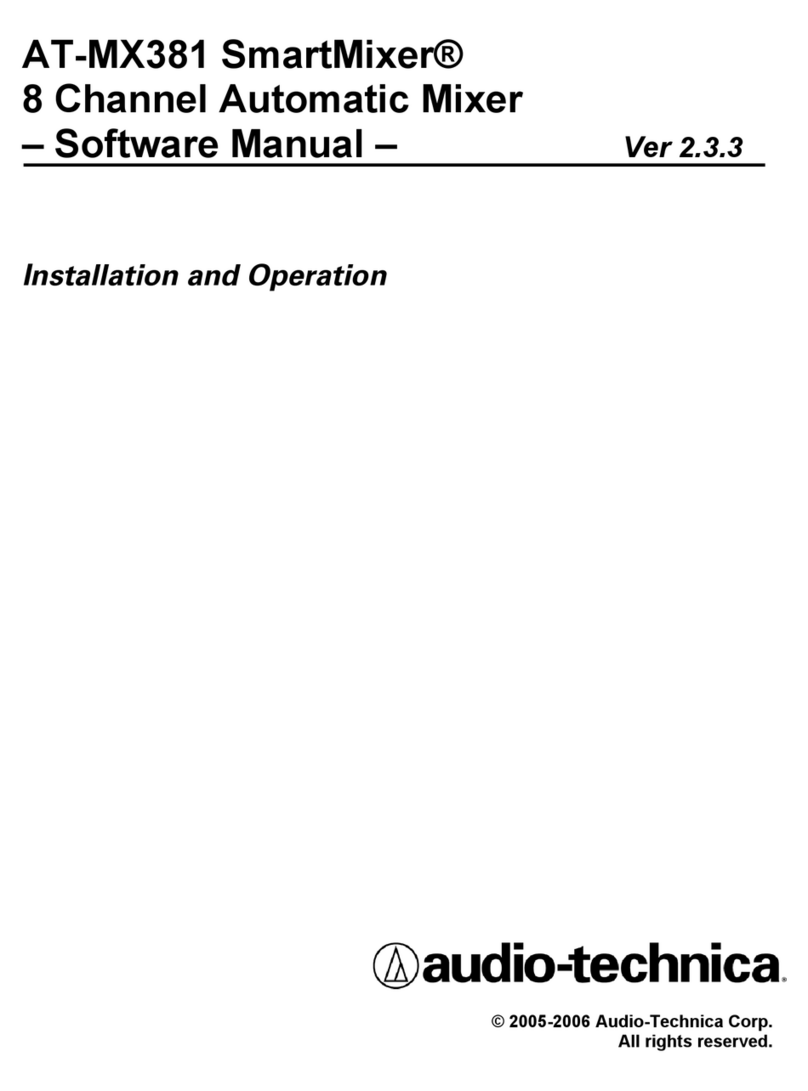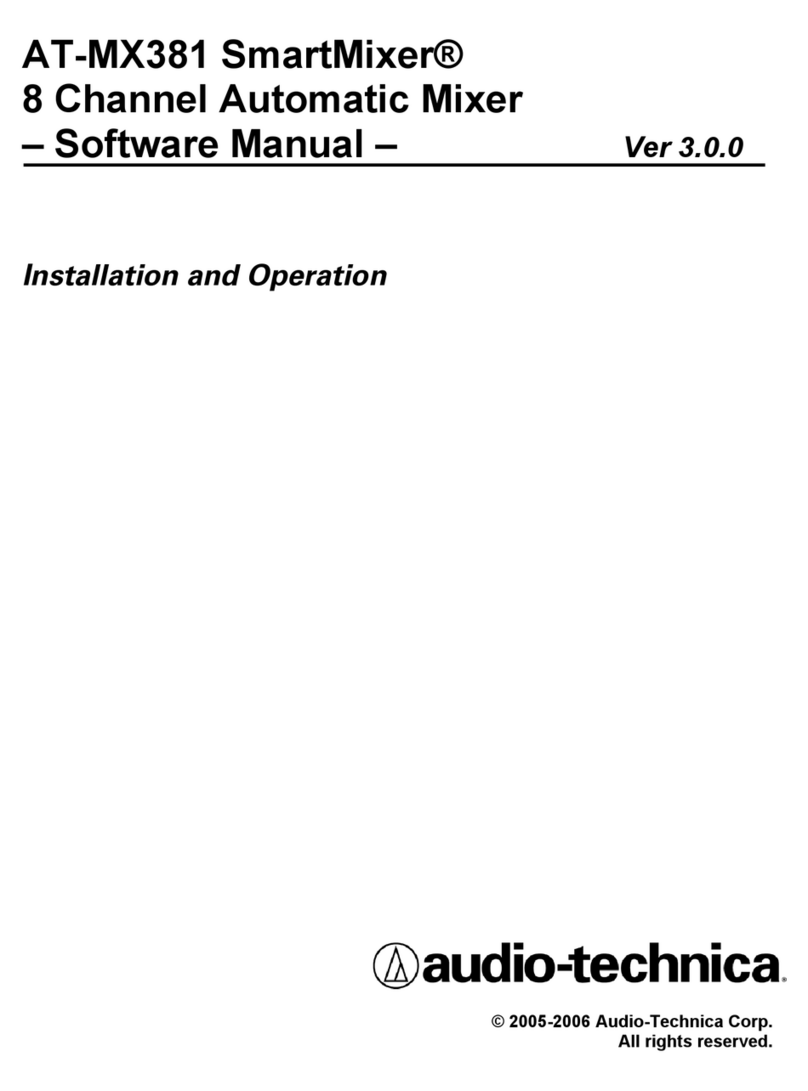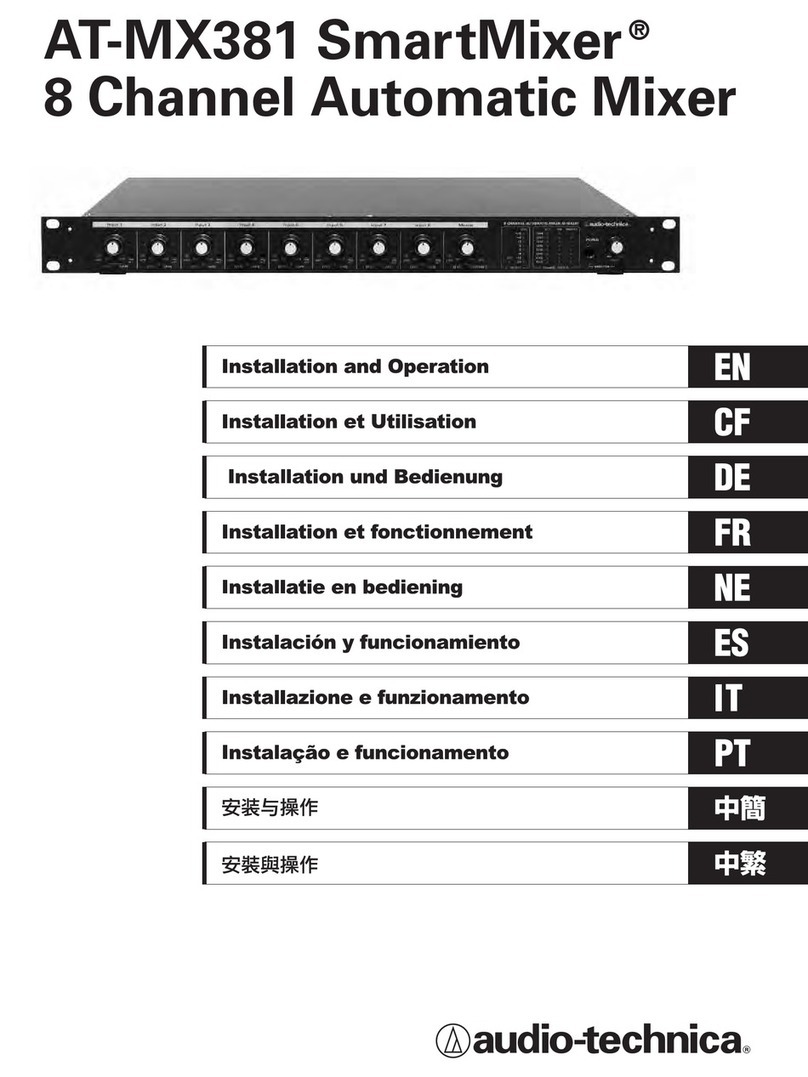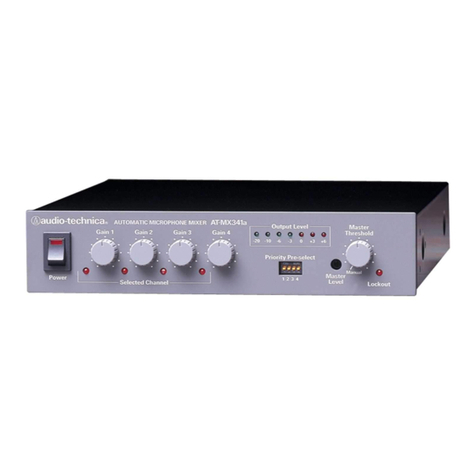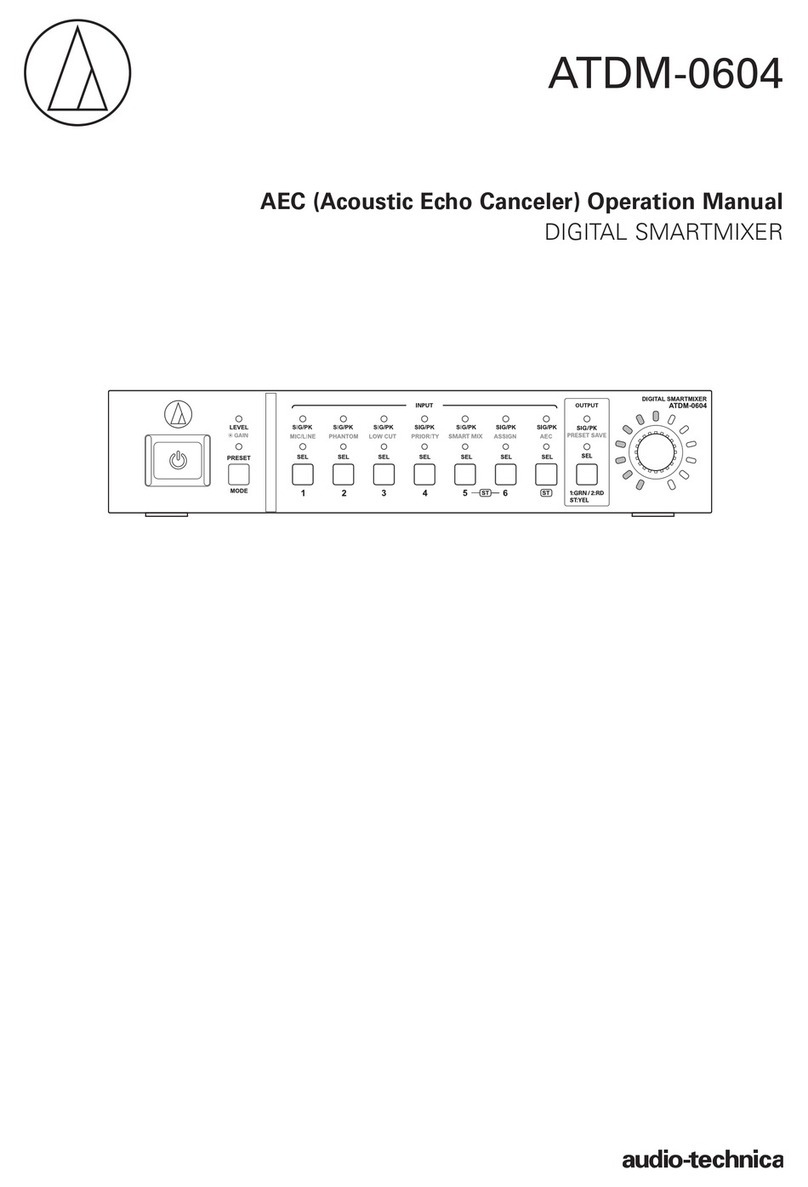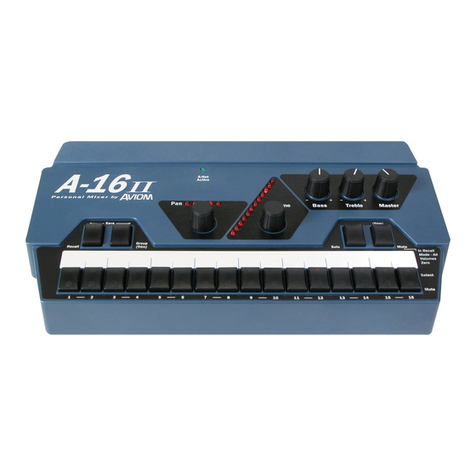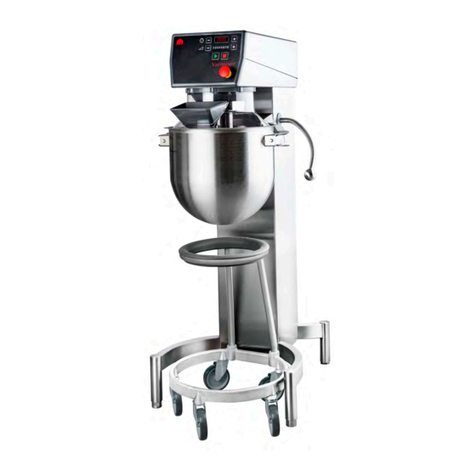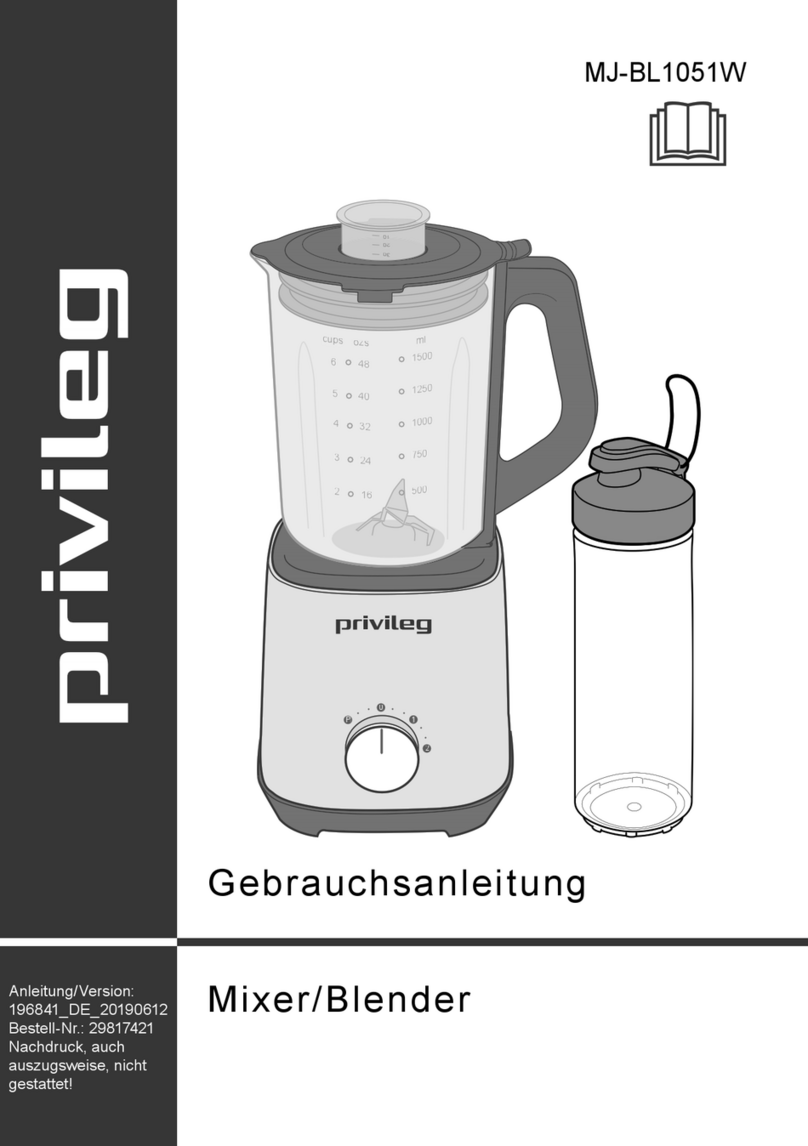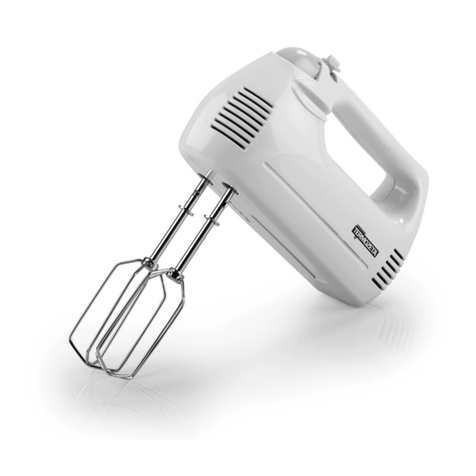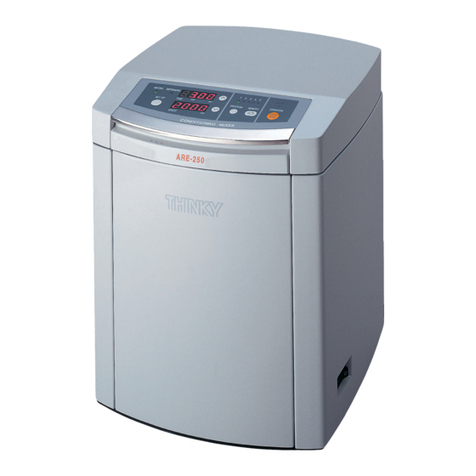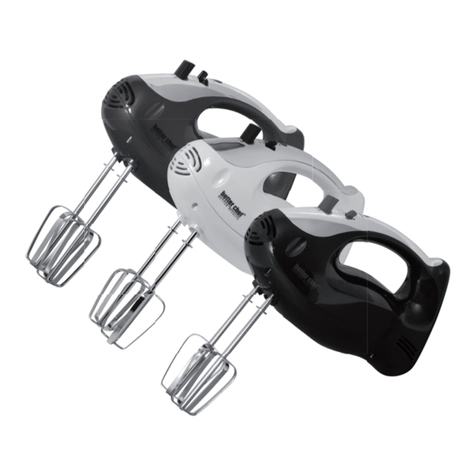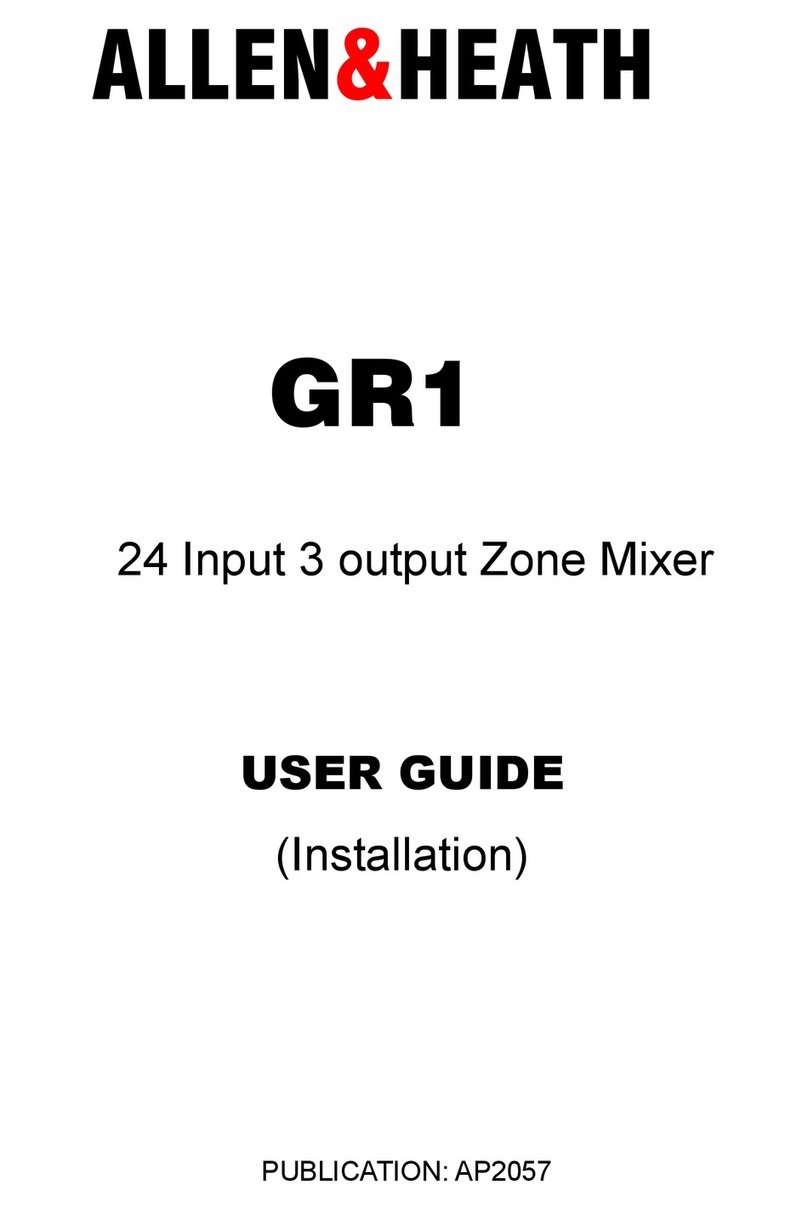
6
Priority Microphones and the Lockout Bus (Channels 1-8)
Once the Input Level controls have been properly adjusted, an audio signal
appearing in any channel causes the lockout control bus to activate. The prior-
ity settings associated with each input channel then determine whether or not
a particular mic is affected by lockouts caused by other mics.
When a channel’s Priority is OFF, other channels can lock out its mic.
When a channel’s Priority is set to ON, it will not allow lockout of its mic.
* Note that any mic that is described as “locked out” or “off “ is really just
being attenuated by between 6 dB and 96 dB from the level otherwise deter-
mined by its Level and Trim control setting, sensitivity and placement. See the
“Daisy-chaining Mixers” section on Page 7 for further details.
How Priority is assigned for the input channels determines the overall auto-
matic mixing operation. By incorporating the priority settings along with exter-
nal control and computer PC (RS232) Control, complex applications are easily
handled by the SmartMixer. The three most common “modes” of priority pre-
select automatic operation are:
Mode 1… None of the inputs have Priority selected.
In this mode, only one mic can be “on” at a time. The lockout bus shuts
down all other mics until the first speaker pauses. As soon as the con-
trolling microphone goes silent, the lockout bus goes inactive and any
other mic can come on. All switching takes place without any syllable-
grabbing delay, pops or clicks.
This mode is very useful when the gain setting of the overall sound sys-
tem must be close to the threshold of feedback, and additional micro-
phones coming on could throw the system into feedback. The
SmartMixer will not allow multiple microphones to be on at the same
time in this mode. The switching is so fast and silent that the meeting
can still be completely interactive.
Mode 2… One or more inputs have Priority selected
The selected priority microphone(s) can come on at any time and can
override any other mics (that are not priority mics). (Note that there may
be circumstances where more than one mic can be set to priority; the
priority speakers talk whenever desired, and override the non-priority
mics.)
Mode 3… All of the inputs have Priority selected.
The lockout bus will activate with any audio input, but no mic will be
locked out…because none are connected to the lockout bus.
Note: If multiple AT-MX381SmartMixers are used with AT8325/1.0 Link Cables,
Priority Pre-select switches on all channels in use will have the control effects
described above for the entire system.
NOMA
Number of Open Microphones Attenuated
In a multiple-microphone system, as more microphones are turned on
(opened), the increased system gain can be a potential source of feedback.
The NOMA system helps control feedback by compensating for the increase
in system gain. A built-in matrix in the AT-MX381 recognizes how many micro-
phones are “on” and automatically adjusts the system gain accordingly.
Because use of NOMA is not always appropriate or desired, the AT-MX381 is
shipped with the NOMA function factory set in the “off ” position. NOMA can
be enabled though the RS232 interface by using a PC running the SmartMixer
Software.
NOMA serves to maintain overall system gain by proportionately reducing the
mixer output level as the number of open microphones increases. (Typically,
attenuation is about 3 dB per additional open microphone.) In a sound rein-
forcement system, this can tend to preserve the feedback margin and system
stability. However, this action necessarily reduces the sound level of each
individual person speaking, which may not be desired. In the end, use of
NOMA often comes down to the preferences of the system’s designer and/or
operator. Generally speaking, use of NOMA is not desirable in applications
such as teleconferencing, recording or broadcasting.
Preamplifier Gain
The SmartMixer has a substantial gain range, allowing it to accept a wide vari-
ety of microphones and line level input sources. However, if in some instances
higher-output microphones are used for close talking, it may be necessary to
reduce the preamplifier gain. Turn the Input Trim control associated with each
input channel counterclockwise (CCW) to reduce the gain. Likewise, turning
the control clockwise (CW) will increase the gain for lower-output sources. In
addition for Line Level sources, the input can be attenuated by 35 dB by push-
ing the recessed “Input Attenuator Select” button twice; this will light the ATT.
LED for the selected channel. (Note, when attenuation is selected, phantom
power is automatically turned off.)
Phantom Power
Each of the SmartMixer’s inputs can supply +48V DC phantom power (default
off). To turn phantom power on or off for a given input, simply push the
recessed P48/ATT. button associated with each channel (using a small tool).
When phantom power is turned on for a given channel, the P48 LED associat-
ed with the channel illuminates in the Channel Status Display. Note that,
although they do not require phantom power for operation, most balanced-
output dynamic microphones can be used without disabling the SmartMixer’s
phantom power.
Output Limiter
The AT-MX381 includes a switchable output limiter circuit. When engaged, the
limiter helps prevent distortion caused by loud audio peaks. The limiter is fac-
tory configured for optimum operation (no user settings) and is turned ON or
OFF (default is OFF) from a PC running the SmartMixer Software.
Output Level
The SmartMixer’s output is factory set to no output attenuation (line level).
Should attenuated output be desired (mic level), simply push the recessed
ATT. button located next to the Master Level/Threshold control (using a small
tool). The ATT. LED will illuminate in the Output Display.
Output Level LED Meter
The Output Level LED meter is factory set to indicate audio level before the
Master Level control. This allows the meter to be used for setting up the
SmartMixer with the Master Level control turned down and no audio appear-
ing at the main output. If it is desired to have the meter affected by the master
volume control, it can be changed using a PC via the RS232 port. (Refer to
SmartMixer Software Master Control Section.)
Last Mic On
It is often desirable to have the most recently used microphone remain “on” to
provide continuous room ambiance. This feature is software selectable
(default – on) and is cascaded throughout all linked mixers so that only one
microphone in the entire system will remain on.
Adjusting Gate Attenuation (“OFF”)
When a microphone is “off,” its input is only attenuated. The attenuation level
(gate attenuation) is adjustable (0 dB to full mute) via the SmartMixer Software.
In instances when the number of microphones in use is high, it may be neces-
sary to increase the amount of gate attenuation (“OFF”) per microphone to
keep the total ambient noise level low. Each input channel can have its gate
attenuation set individually via a PC running the SmartMixer Software. The
gate attenuation can be set anywhere from 0 dB to -96 dB and full mute in 12
dB steps. (Default setting is –36 dB.) (Refer to SmartMixer Software Channel
Setting Section.)
Adjusting Gate Hold Time
Some applications may require that a microphone remain on for a longer peri-
od after a person stops speaking. If, for instance, the speaker pauses fre-
quently, it may be undesirable for the system to switch the mic off. Each chan-
nel’s Gate Hold Time can be adjusted in .5-second (half-second) steps from .5
seconds to 3 seconds. (The default is 1 second.) (Refer to SmartMixer
Software System Setting Section.)
